Learn how to get the name of the month (ie January, February, etc) from a date value like 1/1/ in Microsoft ExcelTake my FREE Microsoft Excel Level 1 I sometimes see requests asking how to convert a number between 1 and 12 into a month name such as "Jan" or "February The most common solution I see offered is along the lines of a SWITCH statement that lists 12 conditions (one for each month) This works, but can also be done using existing functionsThe Microsoft Excel MONTHNAME function returns a string representing the month given a number from 1 to 12 The MONTHNAME function is a builtin function in Excel that is categorized as a Date/Time Function It can be used as a VBA function (VBA) in Excel
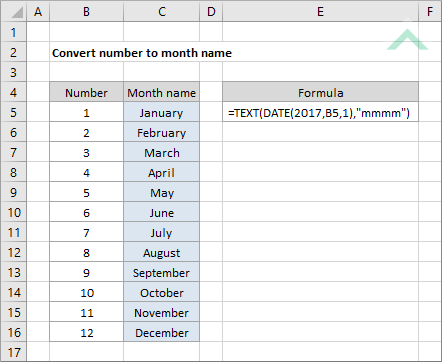
Convert Number To Month Name Excel Vba
Excel return month name from a number
Excel return month name from a number-In cell B2 = MONTH (DATEVALUE (&"1")) The DateValue formula will convert the Month say Jan to If we format the number to Date Format, it will return 1/1/14 Enclosing the Date value formula for the Month Formula will convert the number to 1Using =TEXT formula, easily Convert Month Number to Month Name and Day NameFor the text version of this tutorial, click http//googl/dGWfQ8
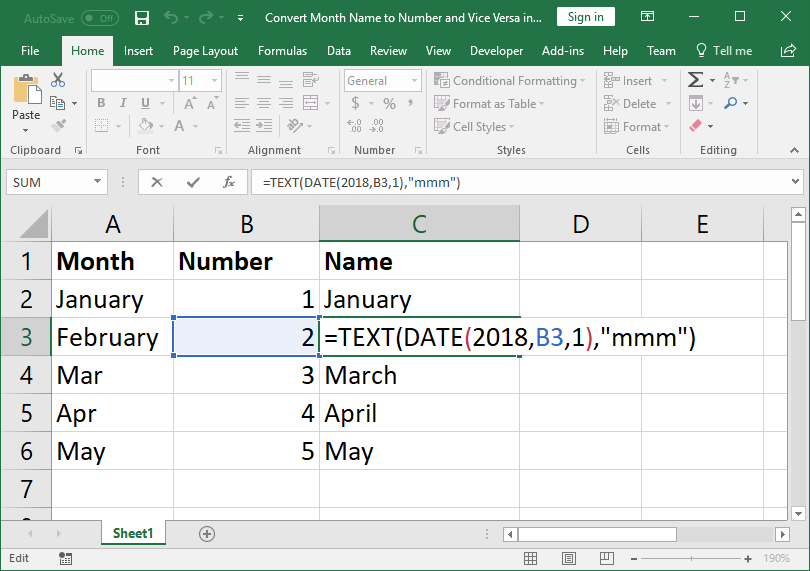



Convert Month Name To Number And Vice Versa In Excel Teachexcel Com
Returns a number (from 0 to 6) indicating the day of the week of the provided value DateDayOfWeekName Returns the day of the week name DateDayOfYear Returns a number that represents the day of the year from a DateTime value DateDaysInMonth Returns the number of days in the month from a DateTime value DateEndOfDay An alternative way to get a month number from an Excel date is using the TEXT function =TEXT (, "m") returns a month number without a leading zero, as 1 12 =TEXT (,"mm") returns a month number with a leading zero, as 01 12 Please be very careful when using TEXT formulas, because they always return month numbers as text stringsThe Excel CHOOSE function returns an Nth value from a list of values based on an index number We can enter the month names as a list of values and extract a month number between 1 to 12 using the MONTH function to supply as the index_number argument inside the
Using the CHOOSE Function to Convert Month Number to Month Name in Excel The CHOOSE function provides another great way to convert a month number to the month name in Excel The Excel CHOOSE function returns a value from a list using a given position or index The syntax for the CHOOSE function is as follows =CHOOSE (index_num, value1, value2, ) The WEEKDAY function returns a number from 1 to 7 and we can then use the SWITCH function to assign a weekday name to each of these numbers Get the WEEKDAY Name Using Power Query Power Query (also known as Get & Transform) is a powerful data wrangling tool available in Excel 16 onwardThis formula uses a combination of Excel TEXT, EOMONTH and TODAY functions to calculate the previous month based on the current month The formula uses the EOMONTH and TODAY functions, with the months criteria as 1 to return the last date of the previous month, which in this case would be
If you choose "MMMM", you will get March (full name of the month) If you choose "MMMMM", you will get M (first letter of the month name)Similarly, you can get the name of the day by just changing the format to "DDD", "DDDD" « Is it possible to return the name of the month from a date? The MONTH function tells you the month number for a given date It is commonly used to calculate which month a date represents, eg is stored by Excel as =MONTH () returns 4 The number, is how Excel stores as a date You could also write =MONTH (A1) where A1 contains the date you want to convert




Get Week Number In Excel Reset For Every Month
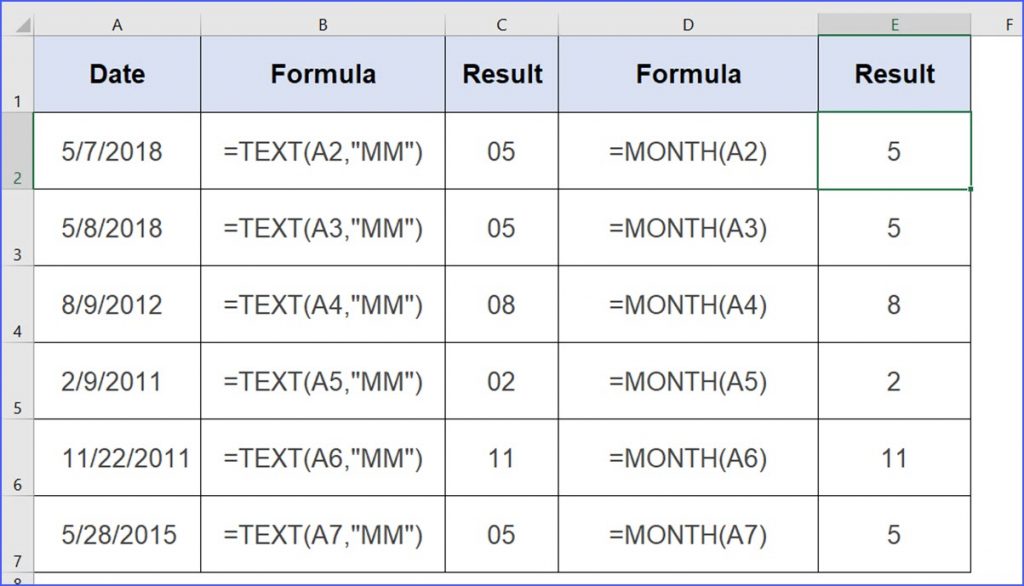



How To Convert A Date To The Month With Two Digits Excelnotes
Formula to convert month name to number =MONTH(DATEVALUE(&1)) The MONTH function returns the month of any date in its argument The argument is the date returned by the DATEVALUE functionYou can obtain the Month of any date in Excel using any method mentioned below There are 3 methods to do so Change Format cell Select the cell and Use shortcut key Ctrl 1 to open the Format cell dialogue box and Select Long Date Format Style as shown below Click Ok and the month will be displayed with the date in the cell To convert the Month Name from the Month Number in the Power BI Report, You have to do the follow things as Rightclick on your Data table (Here, My Data table is Budgets ) Click on the New column Once you will click on the New Column option, then a formula bar will appear on the top of the page In that formula bar, you need to put the




5 Methods Excel Experts Use To Get Extract A Month Name From A Date
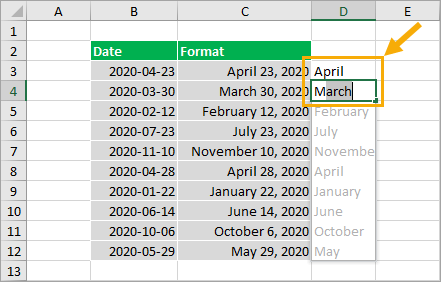



8 Ways To Extract The Month Name From A Date In Excel How To Excel
1 I have table which contains a column of dates in the following format m/d/yyyy Below is a picture, which shows the dates in column C Goal I would like to know how to create a function in VBA that extracts the month number from the dates in column C and return the month name in column E, like shown in the picture below I can enter theIf it is not January, return 0 Add these formulas to columns D and E Then sum the values in this column =SUM(D1D1000) for month, and =SUM(E1E1000) for year, and you will get the number of reports that matches your criteria This is one way you can use Excel formulas to obtain the number of exercises in a certain month or yearHere the DAY Function returns the day number of a date By subtracting this from the current date (and adding 1) we arrive at the first day of the month Google Sheets Example These formulas work exactly the same in Google Sheets as in Excel




Get Find Month Name From Number In Excel
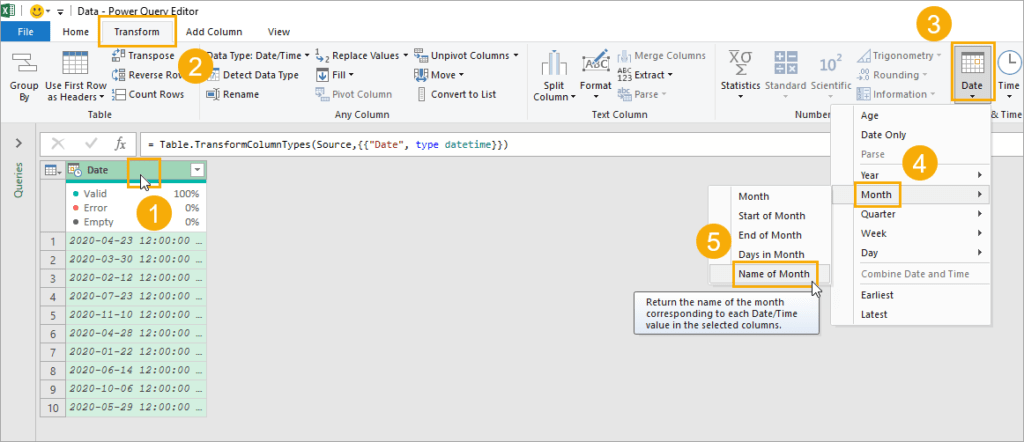



8 Ways To Extract The Month Name From A Date In Excel How To Excel
Mth = MonthName (Month (##)) Note that the above VBA code combines the MonthName function with the Month function, to return the month name for the date Therefore, after running the above VBA code, the variable mth is equal to the String "December" Return to the VBA Functions PageI'm pulling the month from a timestamp and using it for creating a path to save files I'd like to use the name of the month instead of the number I'm pulling the month with the formatDateTime functionIn case you want to get the total number of months as well as days between two dates, you can use the below formula =DATEDIF (,B2,"M")&"M "&DATEDIF (,B2,"MD")&"D" Note DATEDIF function will exclude the start date when counting the month numbers For example, if you start a project on 01 Jan and it ends on 31 Jan, the DATEDIF function
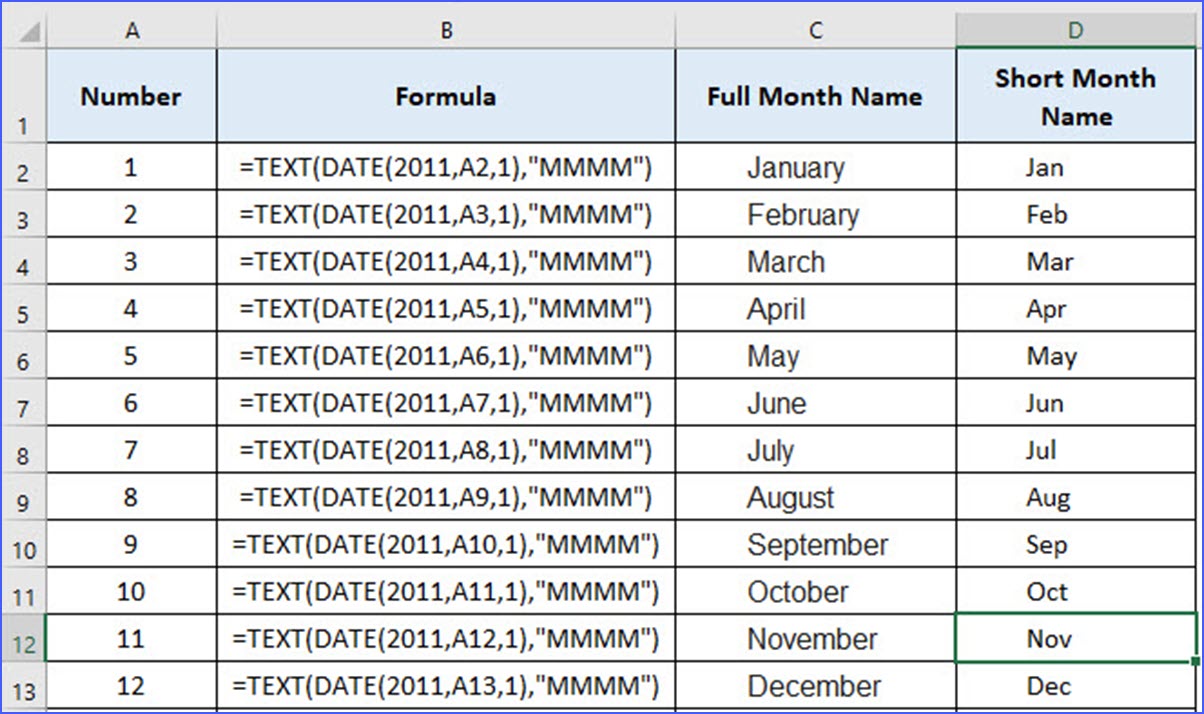



How To Convert A Number To Month Name Excelnotes




Excel Formula Get Month From Date Exceljet
When the number is greater than 12, the results equal to the remainder of the number divided by 12 For example, 13 divided by 12 will have a remainder 1, so number 13 and number 1 return the same month name of January To convert a number into month with full names, please use the following formula and change to the cell in your fileGet Month By Changing Formatting By changing a date's Date Format to "MMMM" you can see the month name or "MMM" to see the month abbreviation Note This will display the month name, but the value stored in the cell will still be the month number Convert Month Names to Dates We can exploit this use of the MONTH function to create a date serial number (shown in column C below) You can then format them as a date (shown in column D below), using Format Cells Note The formula in column C converts the month name in column B to the first day of each month in the current year
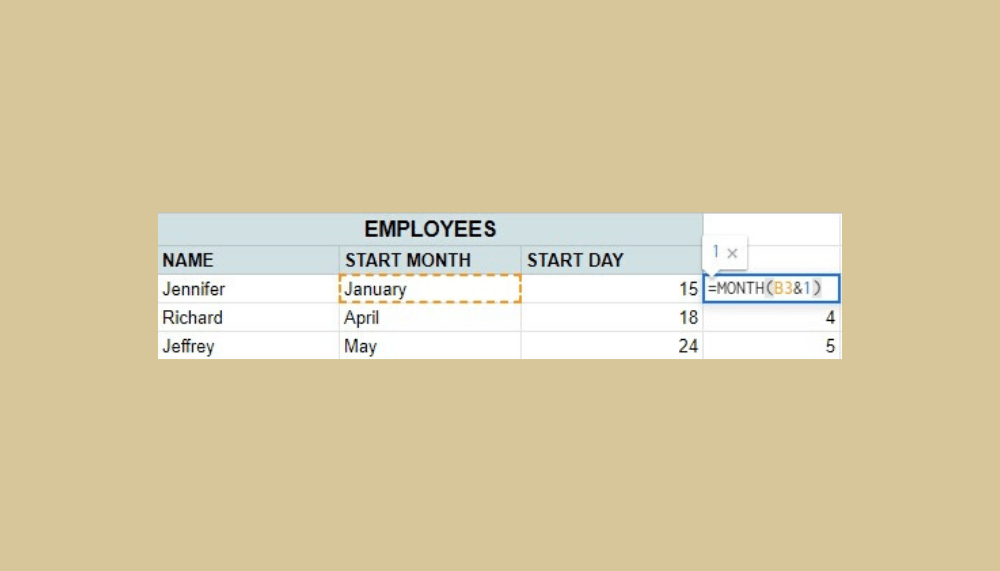



How To Convert Month Name To Number In Google Sheets
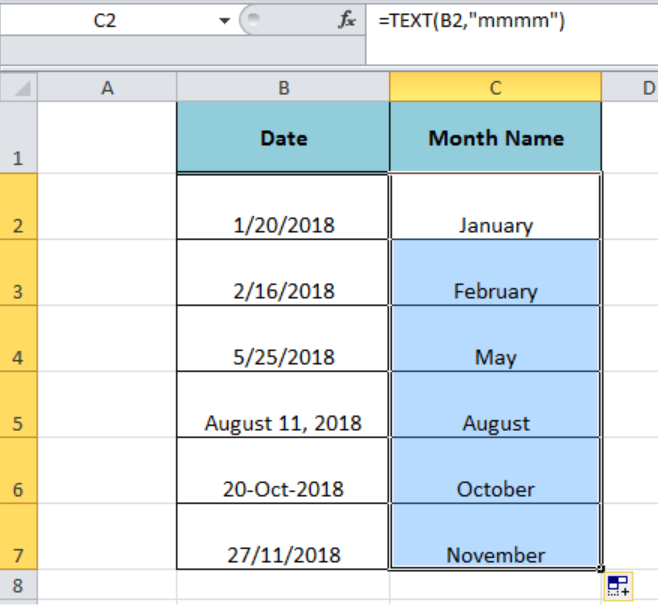



Excel Formula How To Get Month Name From Date In Excel
In this example, you calculate the fiscal month that starts on the 21st and ends on the th of the next month The formula that appears in the Formula Bar is the following =TEXT (EOMONTH (,1),"mmm") In this formula, you first take the date (shown in cell ) and go back days by subtracting Then you use that new date in the EOMONTHThere are two ways that can help you to convert month names to numbers in Excel Method 1 Convert month name to number with formula Type this formula =MONTH(DATEVALUE(A1&" 1")) ( A1 indicates the cell that you want to convert the month name to number, you can change it as you need) into a blank cell, and press Enter key See screenshotMONTH function returns the month number (ranging from 0 to 12) from a valid date As you know, in Excel, a date is a combination of day, month, and year, MONTH gets the month from the date and ignores the rest of the part Syntax MONTH(serial_number) Arguments serial_number A valid date from which you want to get the month number Example
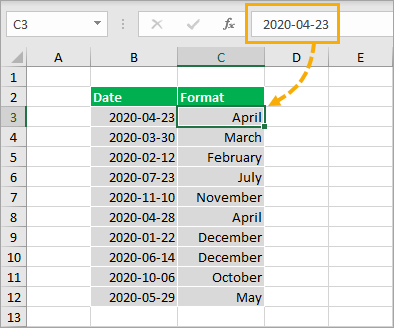



8 Ways To Extract The Month Name From A Date In Excel How To Excel
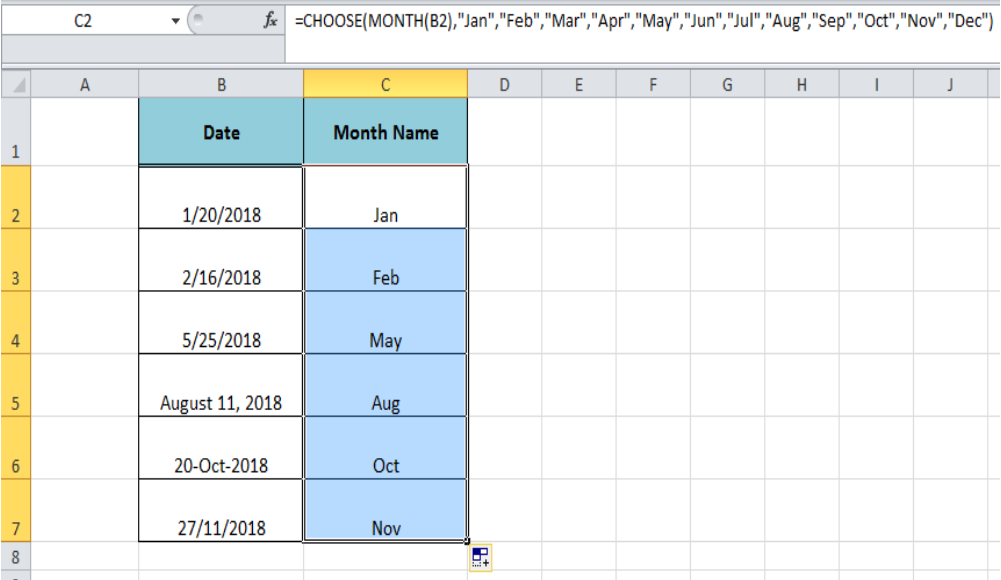



Excel Formula How To Get Month Name From Date In Excel
Excel MONTH Function The Excel MONTH function returns the month of a date represented by a serial number And the month is an integer number from 1 to 12The syntax of the MONTH function is as below=MONTH (serial_number)Returns the month of a date represented by a serial number The month is given as an integer, ranging from 1 (January) to 12 (December) Syntax MONTH(serial_number) The MONTH function syntax has the following arguments Serial_number Required The date of the monthTo get a standard month number from a month name (ie 1 from "January", 2 from "February", 3 from "March", etc) you can use the MONTH function and a bit of concatenation In the example shown, the formula in cell C5 is = MONTH(B5 & 1) As the formula is copied down the column, it returns the correct number for each month
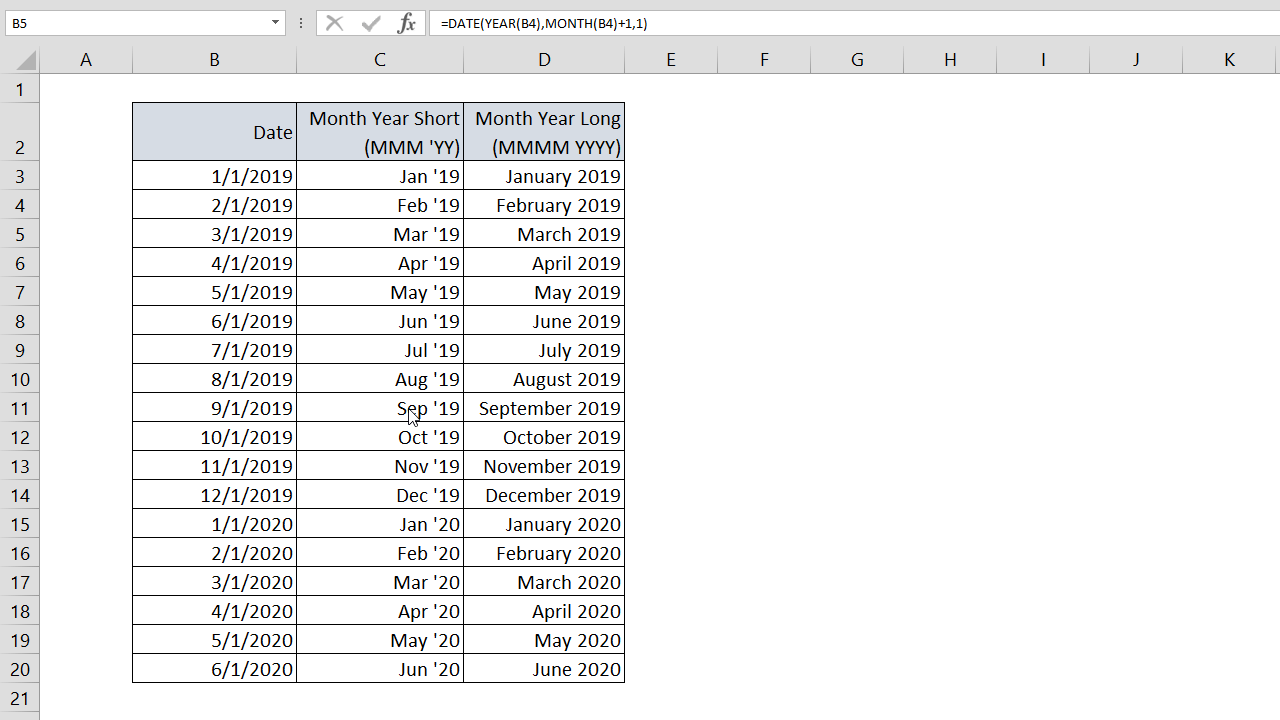



How To Generate Excel Month Names Using Date Year And Month
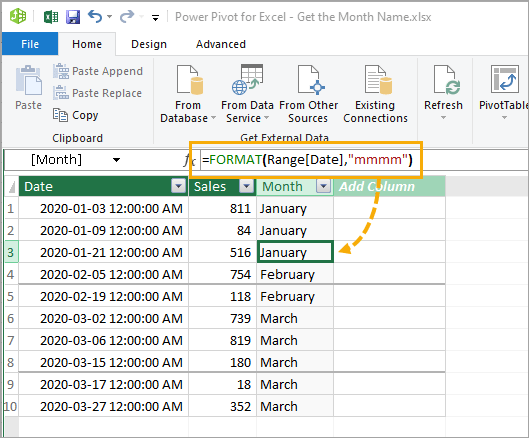



8 Ways To Extract The Month Name From A Date In Excel How To Excel
The formula returns the month's name that is related to the specified number, between 1 and 12 We have manually inserted the first day of a month and any year, in this case using 17 This is done to convert bring the month's number into a date and then use the Excel TEXT function to convert the date into a month that is applied in the dateFor example, the date , is equal to the serial number in Excel MONTH Formula in Excel takes as input both the date directly or the serial number of the date It is to be noted here that Excel does not recognize dates earlier than 1/1/1900 Returns MONTH in Excel always returns a number ranging from 1 to 12WEEKNUM(serial_number,return_type) The WEEKNUM function syntax has the following arguments Serial_number Required A date within the week Dates should be entered by using the DATE function, or as results of other formulas or functions For example, use DATE(08,5,23) for the 23rd day of May, 08




How To Get Month Name From Date In Excel
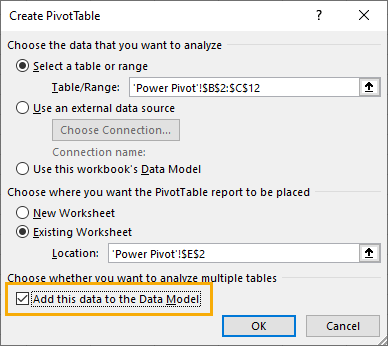



8 Ways To Extract The Month Name From A Date In Excel How To Excel
Excel VBA Month VBA Month Function is a inbuilt function used to get month from a date and the output returned by this function is integer ranging from 1 to 12 This function only extracts the month number from the supplied date value For example, if the date is 28May19, then to extract the month number from this date, we can use the MONTH functionDescription The Microsoft Excel WEEKDAYNAME function returns a string representing the day of the week given a number from 1 to 7 The WEEKDAYNAME function is a builtin function in Excel that is categorized as a Date/Time FunctionIt can be used as a VBA function (VBA) in ExcelWhen using the Month Function, by default, it returns one digit day number if it is the month from January to September, while the Text function will return a text string For example, 5/8/11 will return 5 when using the month function, and return to 05 or the month name
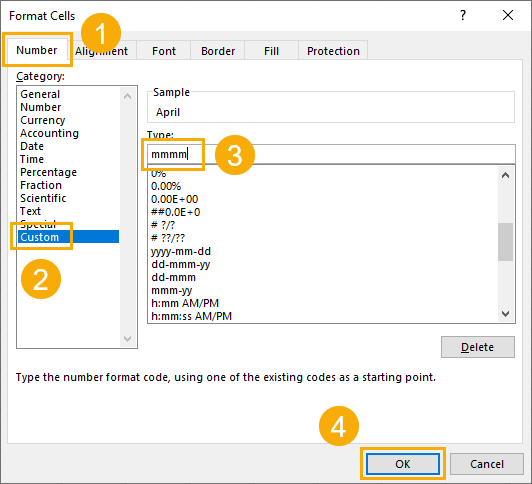



8 Ways To Extract The Month Name From A Date In Excel How To Excel
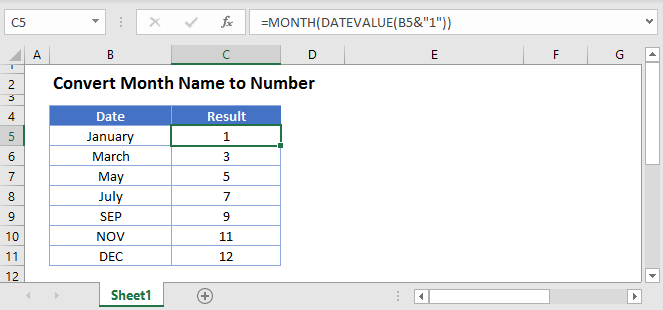



Convert Month Name To Number Excel Google Sheets Automate Excel
A forum for all things Excel Ask a question and get support for our courses Hi every one could you pleas help me how to convert week to month eg Week (21) it come Month Hi , all Is there a way to have Excel calculate the month from the week number and year?Here Month function is used to display month number MonthName function helps to generate name of the month from specified month number Here is the output screenshot for your reference Format Name of the Month We have different format methods to format name of the month You can find output in an immediate window




How To Convert 1 12 To Month Name In Excel
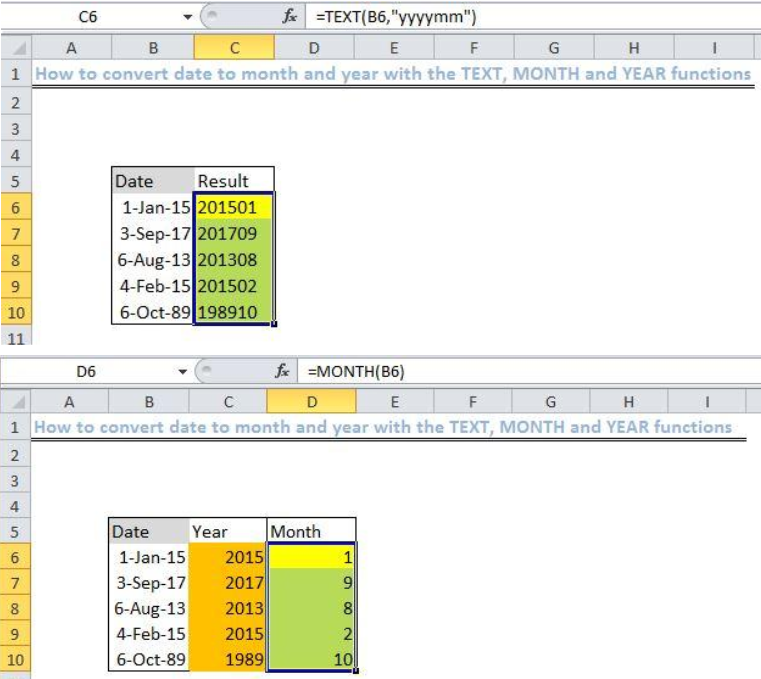



Excel Formula Convert Date To Month And Year
You can use that functionality to convert the text of a month into the month number Assume A1 contains the word September The following formula will convert that into the number 9 =MONTH(1&LEFT(A1,3))Select a blank cell next to the sales table, type the formula =TEXT (*29,"mmm") (Note is the first number of the Month list you will convert to month name), and then drag the AutoFill Handle down to other cells Now you will see the numbers (from 1 to 12) are converted to normal month names Convert 112 to month name with Kutools for Excel Getting month's name from a number is very useful in excel as we perform a lot of calculation on dates like subtracting n number of days from a date, or subtracting n number of months from a date and surely we would like to get the month's number and subsequently its name



1




Convert Month Name To Number And Vice Versa In Excel Teachexcel Com
For example, if I have the week number "2" in one cell and the year 12 in another, I want Excel to automatically give the month for that week, January (or 1) in a third cell
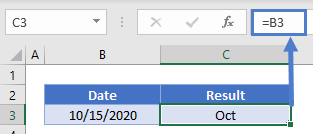



Get Month Name From Date Excel Google Sheets Automate Excel
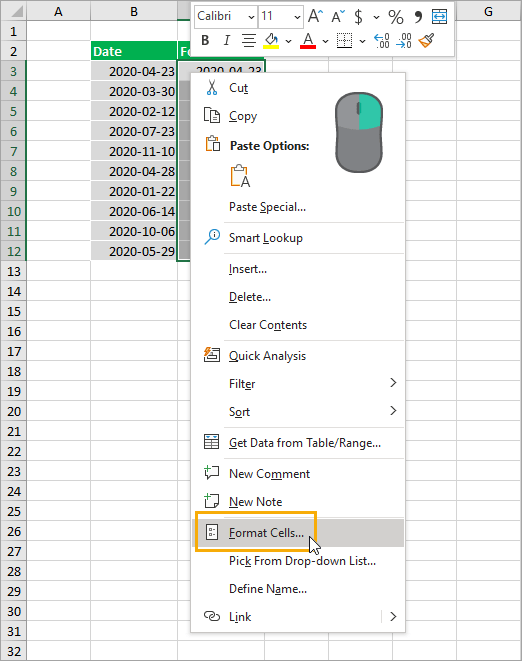



8 Ways To Extract The Month Name From A Date In Excel How To Excel




Get Week Number In Excel Reset For Every Month




Excel Month Function Month Name From Date Last Day Of Month Etc




How To Convert Month Number To Month Name In Excel Spreadsheet Planet




3 Easy Ways To Get Month Name From Date In Excel Youtube




How To Convert Month Name To Number In Excel




How Do I Extract The Month Number From A Date And Return The Month Name Stack Overflow




How To Get Month Name From Date In Excel 4 Easy Ways Trump Excel



1




How To Get Month Name From Date In Excel 4 Easy Ways Trump Excel




How To Convert Month Name To Number In Excel



3
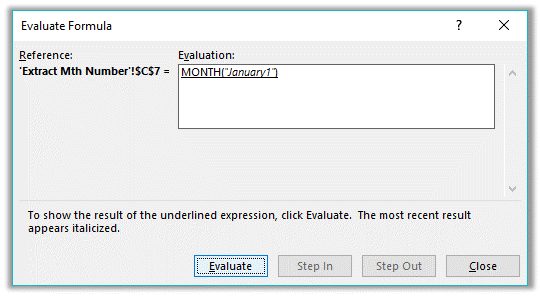



Convert Month Names To Numbers My Online Training Hub




How To Get English Month Name From Date In Russian Excel Stack Overflow




How To Convert 1 12 To Month Name In Excel
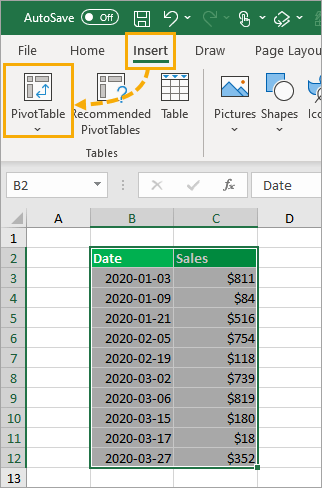



8 Ways To Extract The Month Name From A Date In Excel How To Excel




Get Find Month Name From Number In Excel




5 Methods Excel Experts Use To Get Extract A Month Name From A Date




8 Ways To Extract The Month Name From A Date In Excel How To Excel




How To Convert Month Number To Month Name In Excel Spreadsheet Planet




Convert Number To Month Name Excel Vba
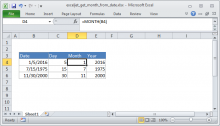



Excel Formula Get Month Name From Date Exceljet




Convert Month Number To Month Name In Excel Youtube
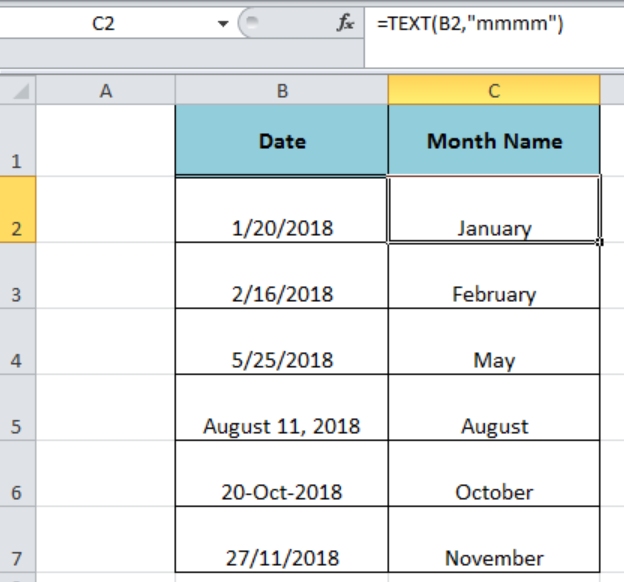



Excel Formula How To Get Month Name From Date In Excel




Dax Convert Number Into Month Name Radacad
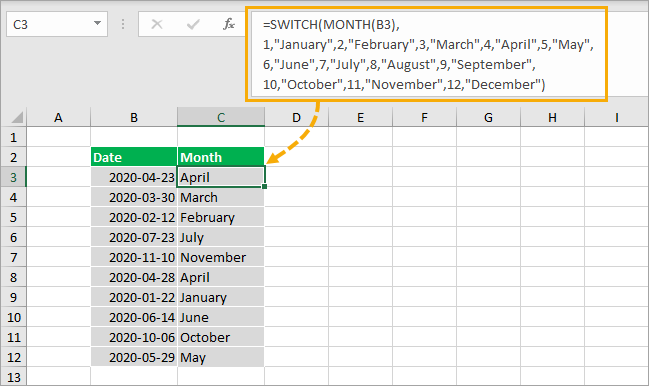



8 Ways To Extract The Month Name From A Date In Excel How To Excel
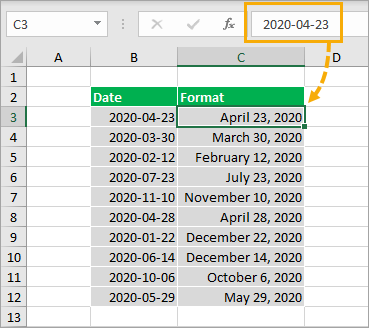



8 Ways To Extract The Month Name From A Date In Excel How To Excel




How To Get Month Name From Date In Excel 4 Easy Ways Trump Excel
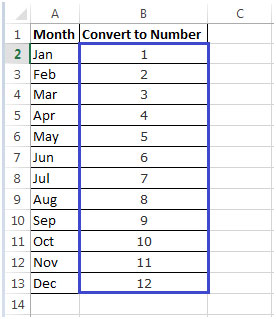



Converting Month Name To A Number In Microsoft Excel
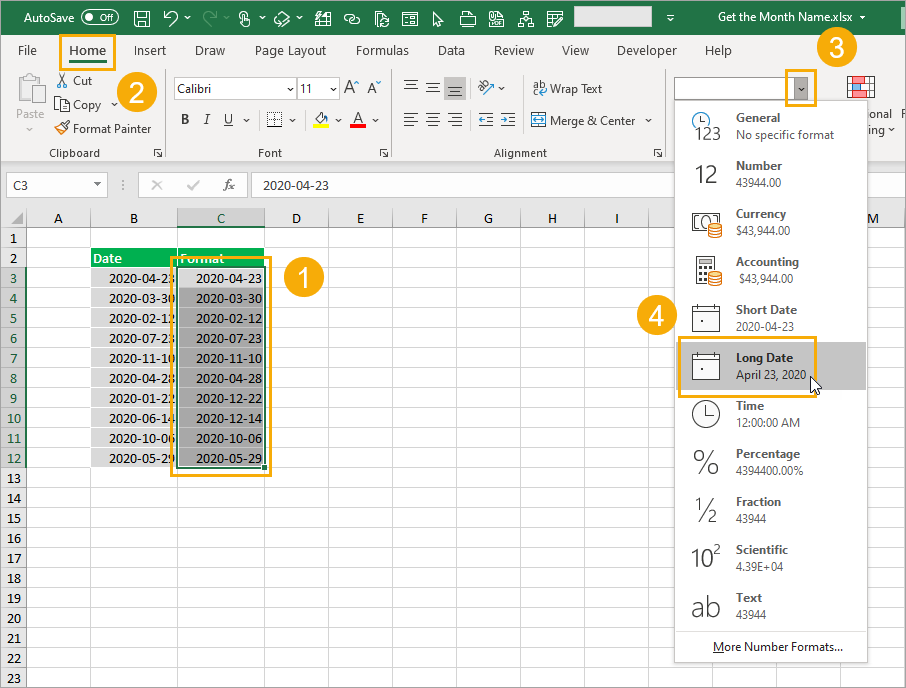



8 Ways To Extract The Month Name From A Date In Excel How To Excel
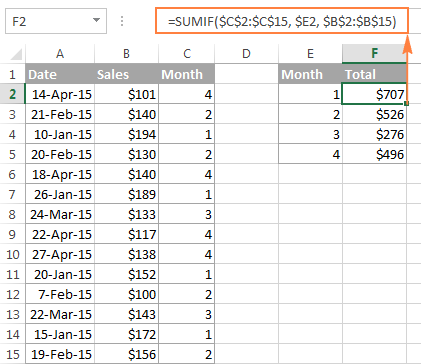



Excel Month Function Month Name From Date Last Day Of Month Etc
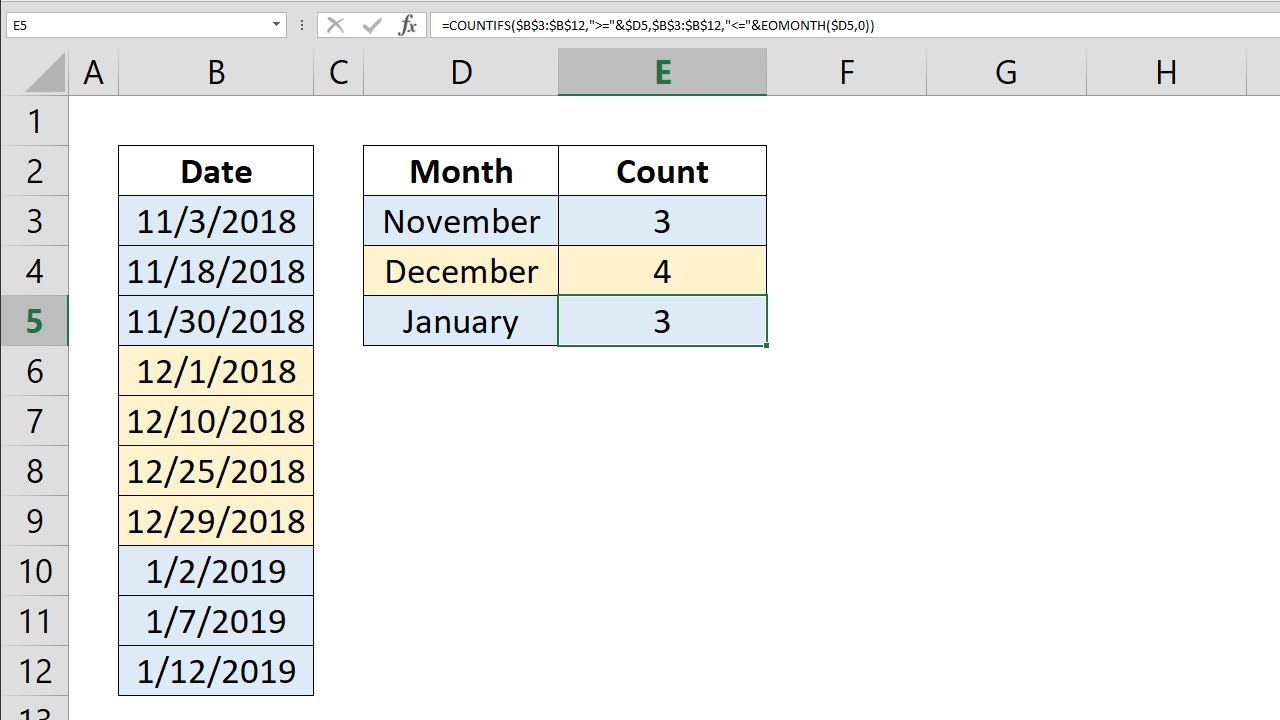



How To Count By Month Count Month With Countifs And Eomonth



Excel Converting Dates To Quarters Strategic Finance




Vba Get Month Name From Date Using Vba Functions Vbaf1 Com




5 Methods Excel Experts Use To Get Extract A Month Name From A Date
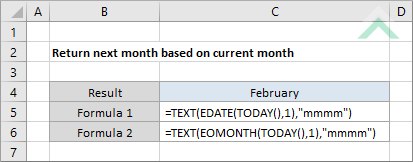



Return Next Month Based On Current Month Using Excel And Vba Exceldome




How To Convert 1 12 To Month Name In Excel
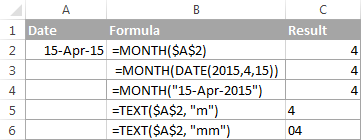



Excel Month Function Month Name From Date Last Day Of Month Etc
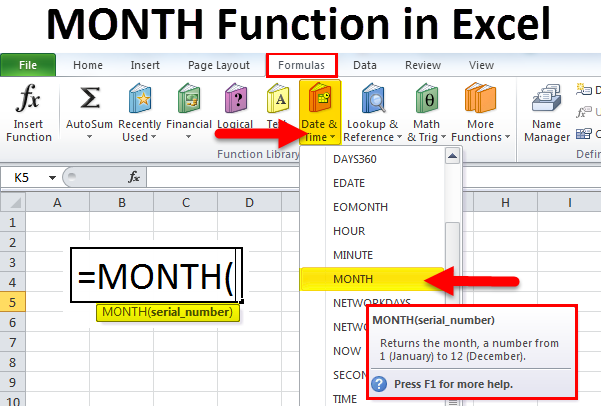



Month In Excel Formula Examples How To Use Month Function
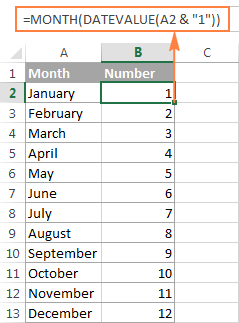



Excel Month Function Month Name From Date Last Day Of Month Etc
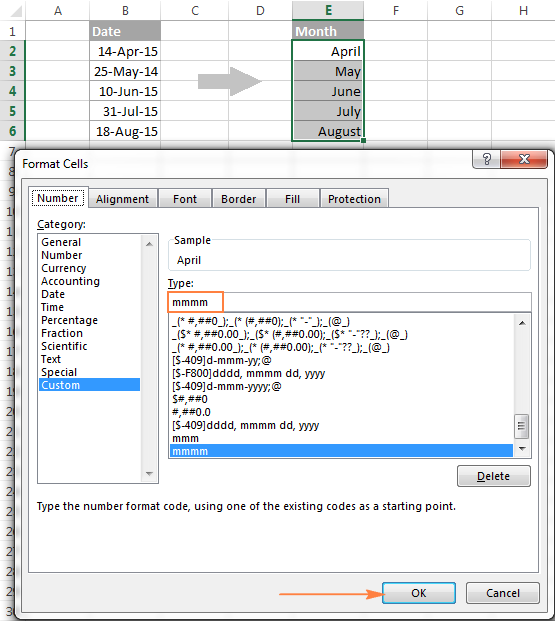



Excel Month Function Month Name From Date Last Day Of Month Etc




How To Convert Date To Weekday Month Year Name Or Number In Excel
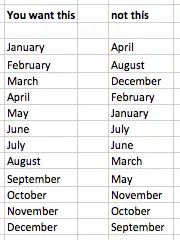



Convert A Month Name Into A Number Learn Microsoft Excel Five Minute Lessons




Excel Vba Basics 25 Extract The Day Weekday Month Year From A Date How To Use Dateserial Youtube
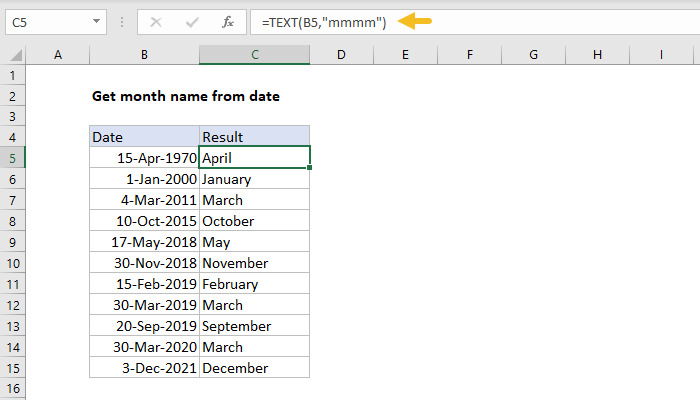



Excel Formula Get Month Name From Date Exceljet
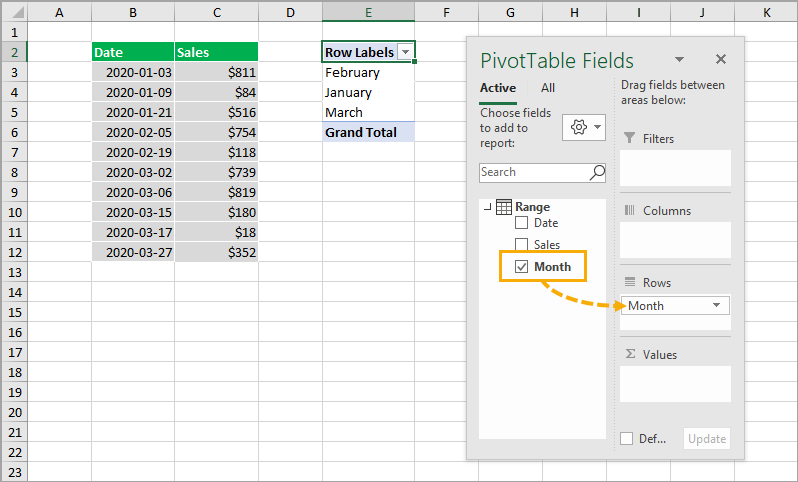



8 Ways To Extract The Month Name From A Date In Excel How To Excel




How To Get English Month Name From Date In Russian Excel Stack Overflow




Excel Month Function Month Name From Date Last Day Of Month Etc




How To Get Month Name From Month Number In Power Bi Stack Overflow



Excel Converting Dates To Quarters Strategic Finance
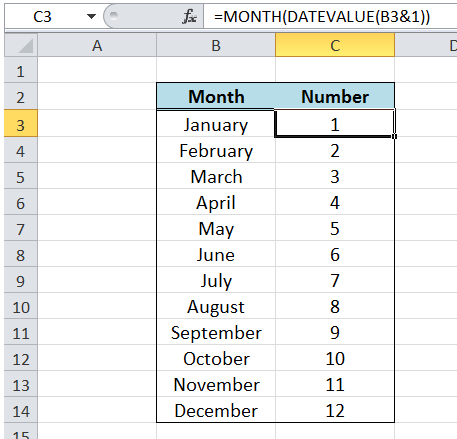



Convert Month Name To Number In Excel Excelchat




How To Convert Month Name To Number In Excel
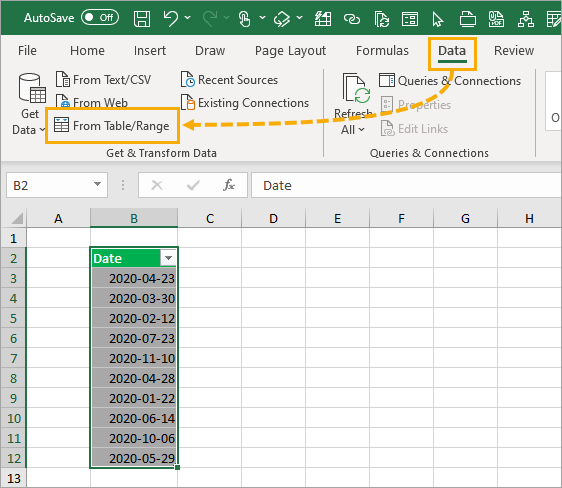



8 Ways To Extract The Month Name From A Date In Excel How To Excel




How To Convert Month Name To Number In Excel




First Day Of Month Formulas In Excel And Google Sheets Automate Excel
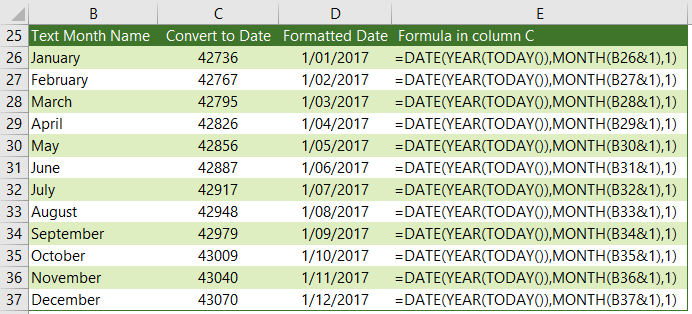



Convert Month Names To Numbers My Online Training Hub




5 Methods Excel Experts Use To Get Extract A Month Name From A Date




How Do I Extract The Month Number From A Date And Return The Month Name Stack Overflow
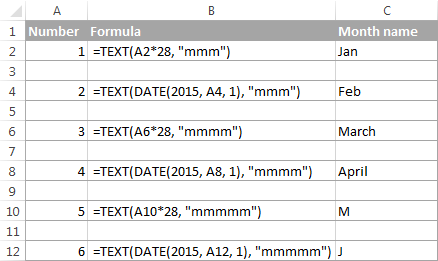



Excel Month Function Month Name From Date Last Day Of Month Etc
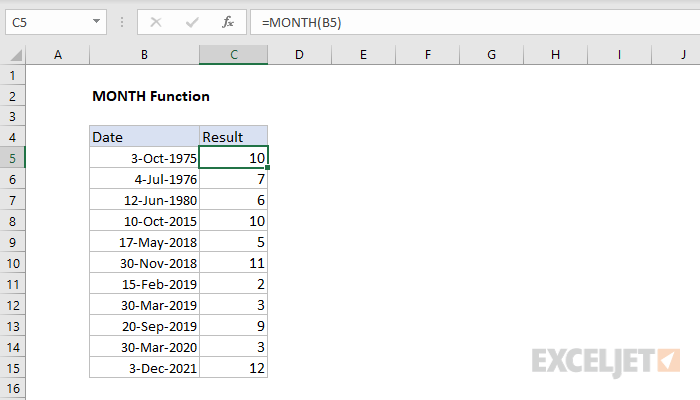



How To Use The Excel Month Function Exceljet
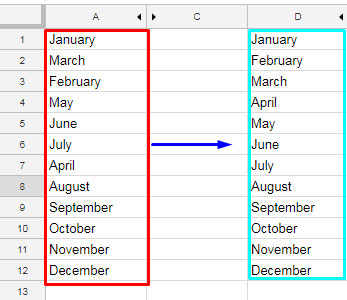



Convert Numbers To Month Name In Google Sheets



1
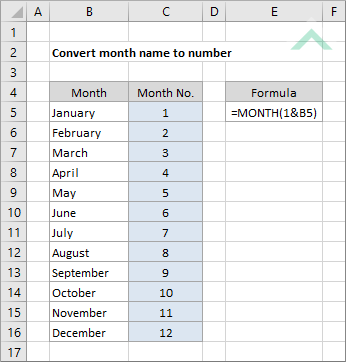



Convert Month Name To Number Excel Vba




How To Convert Month Name To Number In Excel
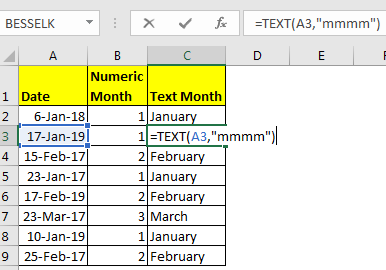



How To Get Month From Date In Excel
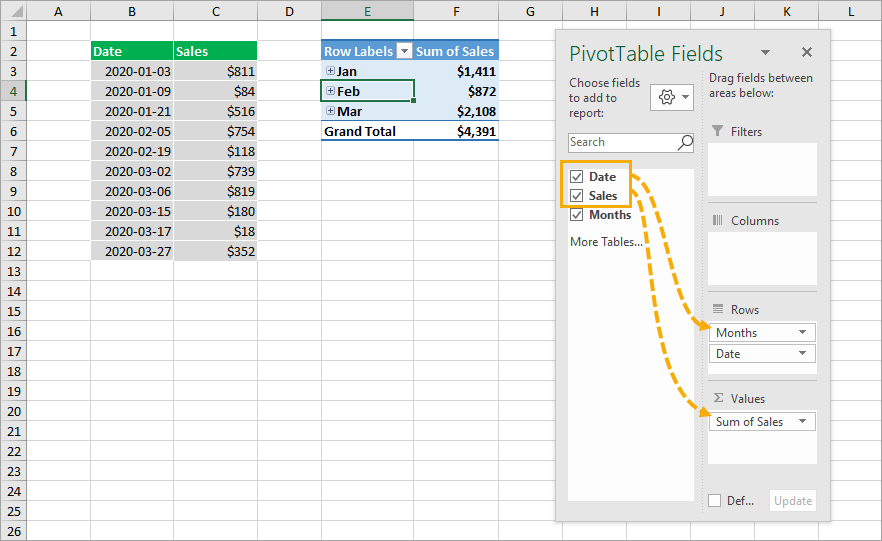



8 Ways To Extract The Month Name From A Date In Excel How To Excel




How To Get Month Name From Date In Excel 4 Easy Ways Trump Excel




Excel Return Month Name From Date
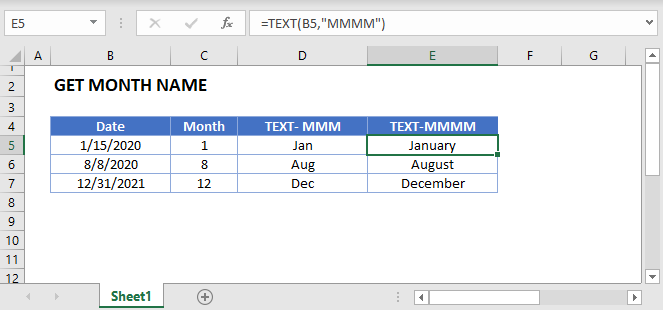



Get Month Name From Date Excel Google Sheets Automate Excel




How To Convert Month Name To Number In Excel
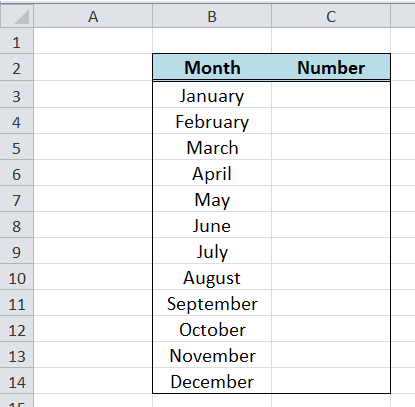



Convert Month Name To Number In Excel Excelchat
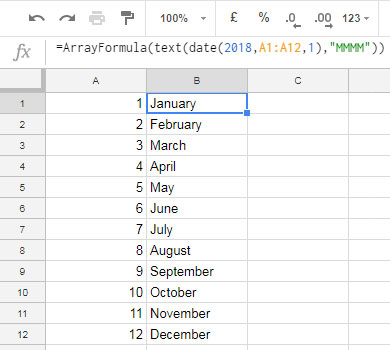



Convert Numbers To Month Name In Google Sheets




Formula To Extract Month From Date In Excel 13 Youtube Youtube




How To Convert Date To Weekday Month Year Name Or Number In Excel
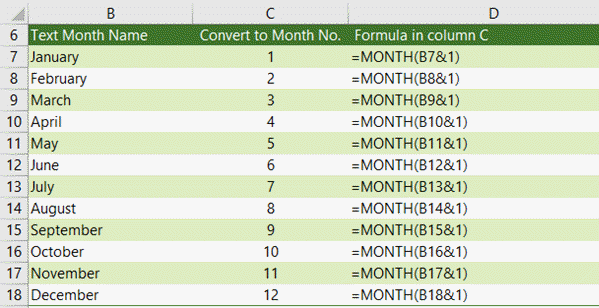



Convert Month Names To Numbers My Online Training Hub
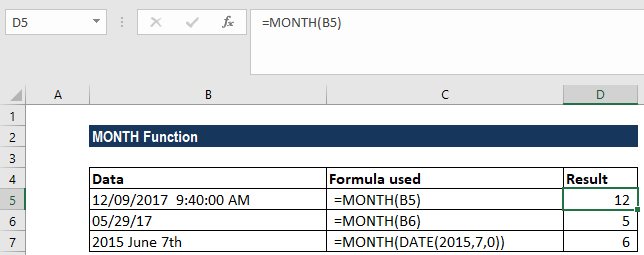



Month Function Formula Examples How To Use Month




Get Find Month Name From Number In Excel




How To Convert 1 12 To Month Name In Excel
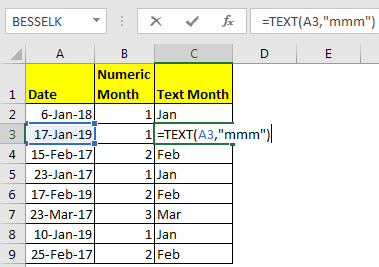



How To Get Month From Date In Excel




Formula Get Total Days In Month In Excel




Solved Format Returns Month Number Microsoft Power Bi Community


